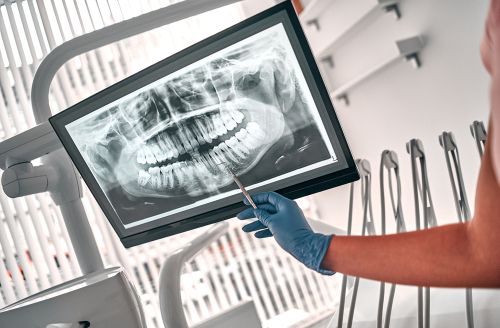Letting go doesn’t always come with fanfare. More often, it arrives quietly—realizing that what once served us is now holding us back. It might be something we’ve grown used to, something that once brought us comfort or stability. But over time, even the most familiar things can begin to wear us down rather than lift us up. Think of it not as a loss, but as an act of care. A way to make room for healing, for growth, for restoration. The same can be said for a tooth that’s no longer serving you. Whether damaged, decayed, or causing more harm than good, keeping it may only prolong discomfort and limit your smile’s potential. Tooth extraction isn’t about giving up—it’s about creating space for something healthier to take root. Sometimes, removing a problem tooth is the first step toward restoring comfort, confidence, and function.
So if you’re facing that decision, know this: it’s not just about what you’re letting go of—it’s about what you’re making room for. A better bite. A stronger smile. A fresh start.
Do I Need a Tooth Extraction?
While tooth extractions sound intimidating, sometimes they are the healthiest choice we can make for our mouth. When a tooth reaches a point where it can’t be saved, removing it can protect your overall oral health and prevent further complications.
One of the most common reasons we may need to extract a tooth is severe decay or structural damage. When a cavity becomes too deep or a tooth breaks beyond the point where restorative treatments like fillings or crowns can help, we lose the ability to save it. Keeping the tooth at that stage can lead to infection, pain, or more serious issues. In these cases, extraction helps stop the problem from spreading to nearby teeth or bone.
Gum disease is another major cause. As periodontal disease progresses, it weakens the structures that support your teeth. If the gums and jawbone can no longer hold a tooth securely, it may loosen and affect your bite or cause ongoing discomfort. Removing that tooth can prevent more damage and support better treatment for the rest of your mouth.
We also look at infection risk. If a tooth is infected and antibiotics or root canal therapy won’t work—or if your immune system makes you especially vulnerable to infection—extraction becomes a proactive step to protect your health.
While we always aim to preserve natural teeth when possible, the goal is your long-term health. When a tooth can’t be saved, extraction clears the way for healing—and for new solutions that restore your comfort, confidence, and smile.
Simple vs. Surgical Tooth Extraction
The type of extraction you need depends on how accessible the tooth is and how complicated its removal might be.
We perform a simple extraction when the tooth is fully visible and easy to reach. In this case, we loosen the tooth with a tool called an elevator and gently remove it using forceps. This process doesn’t involve any cutting or stitches and is typically done with local anesthesia. If your tooth is healthy enough above the gum line—even if it’s damaged or decayed—this is likely the route we’ll take.
A surgical extraction becomes necessary when the tooth isn’t easily accessible. This may happen if the tooth is broken at the gum line, hasn’t fully erupted, or is impacted—meaning it’s stuck beneath the gum or jawbone. In these cases, we make a small incision in the gum to reach the tooth. Sometimes, we remove some surrounding bone or section the tooth into smaller pieces to make the process smoother and safer.
Your Tooth Replacement Options
Once we remove a tooth, the next step is to consider how to fill the space it leaves behind. Replacing that missing tooth is important to keep your bite balanced and your oral health on track. Fortunately, we have several options.
One option we often use after a tooth extraction is a dental bridge. This method fills the gap with an artificial tooth that we anchor to the teeth on either side. We place crowns on those neighboring teeth to keep them in place, turning them into support posts. It’s a reliable option that looks natural, but it does rely on the health and strength of the surrounding teeth.
Another common solution is a removable partial denture. This is a set of replacement teeth attached to a base that mimics the color of your gums. You can take it out to clean, and it fits into place by resting against your existing teeth. It’s often a more affordable choice and works especially well when you’re missing several teeth in one area.
But then there’s the dental implant, and this is where things take a different turn.
The Benefits of Dental Implants
A dental implant doesn’t lean on other teeth. It doesn’t borrow support or ask neighboring teeth to carry extra weight. Instead, we place a small titanium post directly into your jawbone. Over time, your body treats this post like one of its own—it grows bone around it in a natural process called osseointegration. That bond creates a foundation as solid as a real tooth root.
What makes implants truly unique is this: they stand alone. Like natural teeth, they don’t depend on anything else to stay in place. They protect the structure of your smile without shifting the load to other teeth. That independence doesn’t just make them strong—it makes them the closest thing we have to replacing a natural tooth, root and all.
Protect Your Oral Health Today
A troubled tooth doesn’t just affect your mouth—it affects how you eat, how you speak, and how you feel. You deserve answers, options, and a path forward that feels right. If you’re dealing with a painful or damaged tooth, don’t wait. Contact us today to schedule an evaluation and determine if an extraction or tooth replacement is right for you. Your health—and your smile—are worth it.

